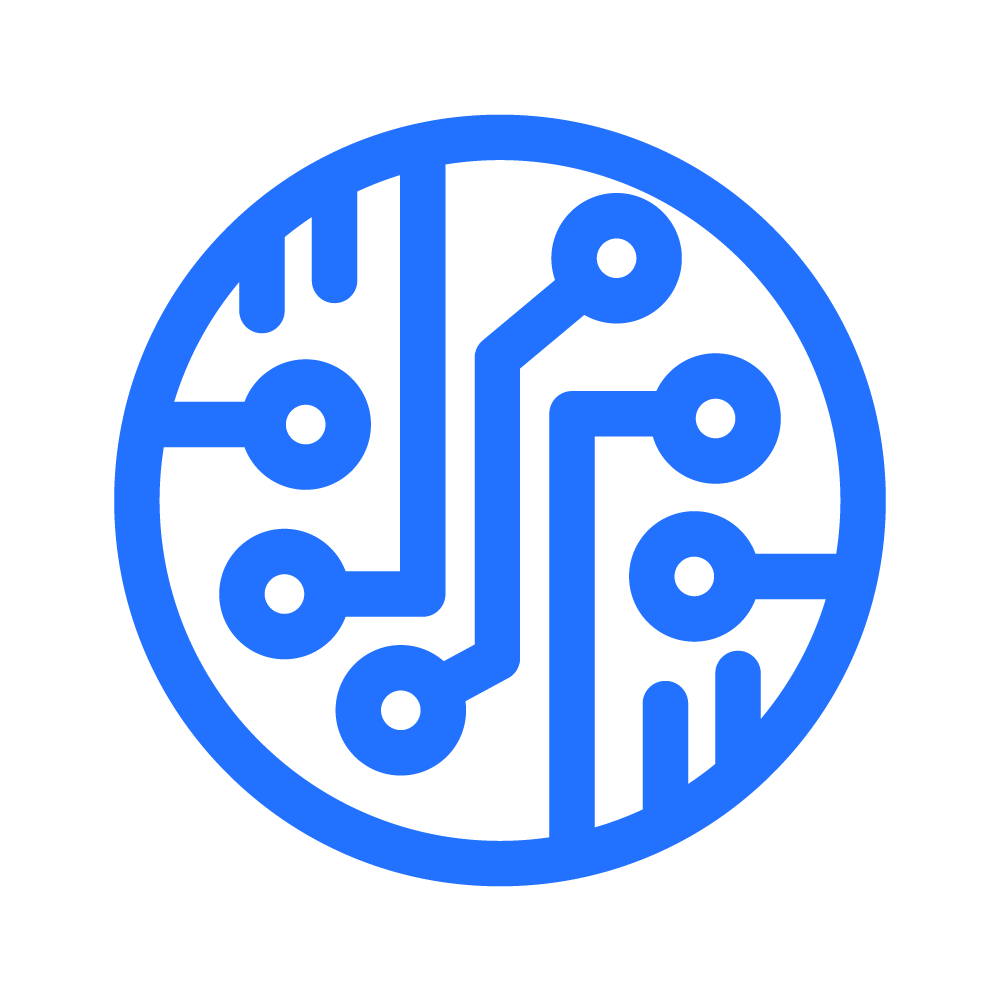Have you ever wondered how businesses streamline their workflows without relying on complex coding? The answer lies in the power of automation. In today’s fast-paced world, efficiency is key, and no-code solutions are revolutionizing how tasks are managed.
These tools empower non-technical users to create automated processes with ease. From saving time to reducing costs, the benefits are undeniable. Industries like SaaS, e-commerce, and fintech are already leveraging these innovations to stay ahead.
In this guide, we’ll explore eight standout tools that make automation accessible to everyone. Whether you’re new to the concept or looking to enhance your workflow, this article has you covered.
Key Takeaways
- Automation simplifies workflows and boosts efficiency.
- No-code tools make technology accessible to non-technical users.
- Cost savings and faster implementation are key benefits.
- Industries like SaaS, e-commerce, and fintech are adopting these solutions.
- Eight featured tools will be explored in detail.
What is Automation Without Coding?
What if you could build workflows without writing a single line of code? This is the promise of no-code automation. Unlike traditional methods that require coding knowledge, these tools use visual interfaces to simplify complex tasks.
Instead of scripting, users can drag and drop elements to create workflows. This approach makes it easier for teams to collaborate, even if they lack technical expertise. Visual editors are at the heart of this innovation, enabling seamless process creation.
These platforms often include pre-built templates, conditional logic, and integration connectors. These features allow users to customize workflows to fit their needs. For example, BugBug’s Chrome-based recorder lets users create tests with just a few clicks.
Gartner predicts that by 2024, 65% of software development will rely on low-code or no-code platforms. This shift highlights the growing importance of accessible tools in modern workflows. Whether you’re a business owner or a team member, no-code solutions can help you achieve more with less effort.
Why Choose Automation Without Coding?
Looking for a way to simplify complex tasks without technical expertise? No-code solutions are transforming how teams work. These tools eliminate the need for coding skills, making them accessible to everyone.
One of the biggest advantages is the learning curve. Unlike traditional methods, no-code platforms use visual interfaces. This means you can create workflows in minutes instead of days.
According to Forrester, 72% of IT leaders report faster deployment with no-code tools. Testing time is also reduced by 40-60% compared to manual methods. This efficiency translates into significant cost savings.
For example, Pipefy offers plans starting at $1,500 per month. This is a fraction of the cost of hiring a developer, which can exceed $15,000 annually. Additionally, platforms like Kobiton have shown a 55% reduction in defects, ensuring higher quality results.
Scalability is another key feature. Tools like Creatio allow businesses to grow without overhauling their systems. Whether you’re a small team or a large enterprise, no-code solutions adapt to your needs.
In summary, no-code tools save time, reduce costs, and improve accuracy. They bridge the skill gap, enabling teams to focus on what matters most—delivering results.
Top Automation Tools for Beginners
Ready to explore tools that simplify tasks and boost productivity? Whether you’re managing workflows or testing web apps, these platforms are designed to make your life easier. Let’s dive into three standout options that cater to beginners and professionals alike.

BugBug – The Ultimate Codeless Web Testing Tool for Chrome
BugBug is a powerful automation tool that simplifies web testing. With its Chrome-based recorder, you can create tests in just a few clicks. It supports cross-browser testing, ensuring your applications work seamlessly across different platforms.
One of its standout features is parallel execution, which reduces test runtime by 65%. Additionally, self-healing tests cut maintenance efforts by 30%, making it a reliable choice for teams. Pricing starts at $29 per month, making it affordable for individual users.
KaneAI
KaneAI is another excellent option for those looking to streamline workflows. Its intuitive interface allows users to create automated processes without technical expertise. With pre-built templates and conditional logic, KaneAI adapts to your specific needs.
This tool is ideal for businesses aiming to scale operations efficiently. Its robust features ensure accuracy and consistency, helping teams deliver high-quality results every time.
BrowserStack
BrowserStack is a trusted platform for testing web applications on over 2,000 real devices. Its cross-browser testing capabilities ensure your apps perform flawlessly across all environments. With a 4.5/5 rating on G2, it’s a favorite among developers and testers.
BrowserStack’s parallel execution feature significantly cuts down test runtime, while its self-healing tests reduce maintenance efforts. Whether you’re an individual or part of a large team, BrowserStack offers flexible pricing tiers to suit your needs.
Features to Look for in No-Code Automation Tools
What makes a no-code platform stand out in today’s tech-driven world? The answer lies in its essential features. These elements ensure efficiency, flexibility, and ease of use for all users.
Visual workflow mapping is a must. It allows users to design processes intuitively. Real-time analytics dashboards provide insights into performance, helping teams make data-driven decisions.
Another critical aspect is seamless integrations. Platforms like Zapier connect with over 7,000 apps, making it easy to automate workflows across tools. Creatio’s AI Copilot takes it further by optimizing processes intelligently.
Security is non-negotiable. Look for SOC 2 compliance and role-based access to protect sensitive data. Additionally, drag-and-drop editors, version control, and mobile testing ensure a smooth experience for all users.
Choosing the right solution can transform how your team operates. Prioritize these features to unlock the full potential of no-code platforms.
How to Get Started with No-Code Automation
Ever thought about simplifying your daily tasks with easy-to-use tools? According to McKinsey, 68% of successful implementations begin with automating repetitive tasks. This approach not only saves time but also boosts productivity.
To get started, follow these steps. First, identify repetitive tasks in your workflow. Next, choose a tool that fits your needs. Finally, build a prototype to test your automation process.
Common first projects include email sorting, data entry, and report generation. These are simple yet impactful ways to see immediate results. For example, Kissflow’s onboarding template is a great starting point for beginners.
To avoid pitfalls, start small and document your processes. This ensures clarity and helps you refine your approach over time. By taking these steps, you’ll unlock the full potential of no-code tools and streamline your workflow effectively.
Benefits of Using No-Code Automation Tools
Why are businesses turning to no-code solutions to enhance their operations? The answer lies in their ability to streamline processes and empower teams. Companies using these tools report 3.2x faster feature deployment, according to IDC. This speed is a game-changer in today’s competitive landscape.
One of the most significant advantages is time savings. For example, Pipefy data shows that HR onboarding processes can save up to 400 hours per year. This efficiency allows teams to focus on strategic tasks rather than repetitive ones.
Cost efficiency is another key benefit. Platforms like Bubble offer an impressive $8 ROI for every $1 spent. This makes no-code tools a cost-effective solution for businesses of all sizes.
Collaboration is also enhanced with these tools. Creatio, for instance, enables marketing and IT teams to work together seamlessly on joint workflows. This cross-functional approach drives innovation and improves outcomes.
Scalability is another standout feature. CloudQA, for example, handles over 50,000 monthly transactions, demonstrating its ability to grow with your business. This flexibility ensures that no-code solutions remain relevant as your needs evolve.
In summary, no-code tools offer time savings, cost efficiency, improved collaboration, and scalability. These benefits make them an essential part of modern software development and business operations.
Challenges in No-Code Automation and How to Overcome Them
What are the hurdles in adopting no-code solutions, and how can they be addressed? While these tools offer immense benefits, they come with their own set of challenges. Understanding these obstacles and knowing how to tackle them is crucial for success.
One common issue is integration limitations. A G2 survey found that 43% of users face difficulties connecting tools. Platforms like TestCraft solve this by offering Selenium integration, ensuring browser compatibility and smoother workflows.
Another challenge is implementing complex logic. Tools like BugBug address this with JavaScript injection, allowing users to add custom scripts for advanced use cases. This flexibility ensures that even intricate processes can be automated effectively.
Vendor lock-in is another concern. To avoid dependency on a single platform, consider open-source tools like SoapUI. These solutions provide greater control and adaptability, meeting diverse business needs.
Scalability can also be a hurdle. BrowserStack’s enterprise-grade infrastructure ensures that your process can grow with your business. Similarly, Kobiton’s device lab management best practices help maintain efficiency as demands increase.
By addressing these challenges, businesses can fully leverage no-code tools to streamline their operations and achieve their goals.
Comparing No-Code Automation Tools
How do you choose the right tool for your workflow needs? With so many options available, it’s essential to compare features, pricing, and integrations. Let’s dive into three standout platforms: BugBug, KaneAI, and BrowserStack.
BugBug stands out as a robust automation software. It offers fast execution speeds, with parallel execution reducing test runtime by 65%. Its Chrome integration makes it ideal for startups, especially with its free plan. Pricing starts at $29 per month, making it a budget-friendly choice.
KaneAI is another strong contender. Its intuitive interface and pre-built templates simplify workflow creation. While it lacks specific pricing details, its flexibility makes it a great fit for mid-sized teams.
BrowserStack excels in cross-browser testing, supporting over 2,000 real devices. Its enterprise-grade infrastructure ensures scalability, though its pricing is higher compared to BugBug. These platforms cater to diverse needs, from startups to large enterprises.
For specialized requirements, consider SoapUI for API testing or Kobiton for mobile app testing. Creatio offers a scalable solution at $85 per user, powered by AI workflows. Over three years, Creatio’s total cost analysis shows significant ROI for enterprises.
In summary, BugBug is ideal for startups, BrowserStack for enterprises, and KaneAI for mid-sized teams. Specialized tools like SoapUI and Kobiton address niche needs, while Creatio provides a comprehensive solution for growing businesses.
Real-World Use Cases of No-Code Automation
How are industries leveraging no-code tools to solve real-world problems? From healthcare to retail, these platforms are transforming workflows and delivering measurable results. Let’s explore some compelling use cases that highlight their impact.
In e-commerce, one company reduced returns processing time by 80% using Pipefy. This streamlined approach allowed team members to focus on customer satisfaction rather than manual tasks. Such efficiency is a game-changer in competitive markets.

Healthcare organizations are also benefiting. Kissflow, for example, automates patient intake forms, reducing errors and improving data accuracy. This ensures a smoother experience for both patients and staff.
In finance, CloudQA’s fraud detection workflows have proven invaluable. By automating complex checks, financial institutions can identify risks faster and with greater precision. This not only saves time but also enhances security.
Retailers are leveraging BrowserStack for cross-browser testing during holiday sales. Ensuring seamless performance across devices helps maximize revenue and customer satisfaction. Similarly, a logistics company achieved 92% faster deployment using Katalon, demonstrating the scalability of no-code solutions.
These examples showcase the versatility and efficiency of no-code tools across industries. By addressing specific challenges, they empower businesses to achieve their goals with ease.
Future of No-Code Automation
What does the future hold for no-code solutions in transforming industries? According to MarketsandMarkets, the no-code market is projected to reach $45.5 billion by 2026, growing at a CAGR of 27.3%. This rapid expansion highlights the increasing adoption of these tools across various sectors.
Emerging trends are shaping the future of no-code platforms. AI-assisted test generation is becoming more common, enabling users to create tests with minimal effort. Voice-controlled editors are also gaining traction, making it easier for non-technical users to design workflows.
Integration with Industry 4.0 technologies, such as IoT devices, is another key development. This allows businesses to automate complex processes across multiple systems seamlessly. As a result, industries can achieve higher efficiency and innovation.
Citizen developers are playing a significant role in this evolution. Gartner predicts that by 2025, 60% of new apps will be built by non-IT staff. This shift empowers individuals to contribute to software development without needing advanced technical skills.
Security is also advancing in the no-code space. Blockchain-based workflow verification is emerging as a reliable method to ensure data integrity and transparency. These advancements make no-code solutions more robust and trustworthy for businesses.
In summary, the future of no-code platforms is bright. With AI, IoT integration, and enhanced security, these tools are set to revolutionize how industries operate and innovate.
Conclusion
Ready to take your workflow to the next level with simple yet powerful solutions? No-code tools offer speed, accessibility, and cost-efficiency, making them ideal for teams of all sizes. Whether you’re streamlining processes or enhancing productivity, these platforms are designed to deliver results quickly.
When selecting a tool, consider features like visual workflow mapping, seamless integrations, and scalability. These elements ensure the platform adapts to your needs as your business grows. For a reliable option, get started with BugBug’s free Chrome extension. It’s a user-friendly choice for creating efficient workflows in minutes.
According to recent data, 89% of early adopters report a competitive advantage after implementing no-code solutions. Don’t wait—explore these tools today and transform how you work.

